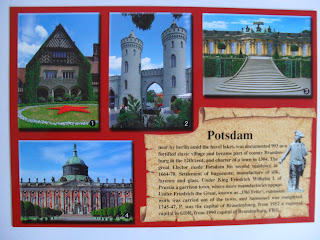My first three postcard from Greece were sent by Anna (FB-swap). The card are so picturesque, I have never been to Greece, I got the mood to visit it soon!! :)
(Received in June, 2012)

Greece (Ελλάδα; historically in Ancient Greek: Ἑλλάς, Hellas), officially the Hellenic Republic (Ελληνική Δημοκρατία), is a country in Southern Europe, politically considered part of Western Europe. Athens is the capital and the largest city in the country (its urban area also including Piraeus).
Greece has land borders with Albania, the Republic of Macedonia and Bulgaria to the north, and Turkey to the east. The Aegean Sea lies to the east of mainland Greece, the Ionian Sea to the west, and the Mediterranean Sea to the south. Greece has the 11th longest coastline in the world at 13,676 km (8,498 mi) in length, featuring a vast number of islands (approximately 1,400, of which 227 are inhabited), including Crete, the Dodecanese, the Cyclades, and the Ionian Islands among others. Eighty percent of Greece consists of mountains, of which Mount Olympus is the highest at 2,917 m (9,570 ft).
Modern Greece traces its roots to the civilization of ancient Greece, generally considered the cradle of Western civilization. As such it is the birthplace of democracy, Western philosophy, the Olympic Games, Western literature and historiography, political science, major scientific and mathematical principles, and Western drama, including both tragedy and comedy. This legacy is partly reflected in the seventeen UNESCO World Heritage Sites located in Greece, ranking Greece 7th in Europe and 13th in the world.

















































